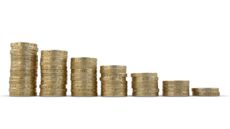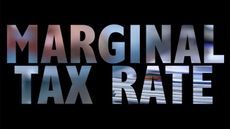Too embarrassed to ask: what is a p/e ratio?
Find out how to use the price/earnings ratio (p/e ratio for short) – a useful starting place for investors looking to value a company.
If you are considering investing a company's shares, then one of the first things you'll want to know is: does the price I'm paying represent good value?
There are lots of ways to answer that question, but one of the first methods' you're likely to encounter is the price/earnings ratio – p/e ratio for short.
Many investors use the p/e ratio as a measure of whether a share is cheap or not. There's good reason for that. It's one of the simplest valuation methods out there. You simply take the share price and divide by its earnings per share (that is, its profits per share). So a company with a share price of 50p and earnings per share of 5p would have a p/e ratio of ten.
Subscribe to MoneyWeek
Subscribe to MoneyWeek today and get your first six magazine issues absolutely FREE

Sign up to Money Morning
Don't miss the latest investment and personal finances news, market analysis, plus money-saving tips with our free twice-daily newsletter
Don't miss the latest investment and personal finances news, market analysis, plus money-saving tips with our free twice-daily newsletter
A p/e ratio which is based on forecast earnings is referred to as a "forward p/e" while one based on past earnings is described as a "trailing p/e".
A p/e of ten means you are paying £10 for each £1 of earnings, while a p/e of 20 would mean you are paying £20 per £1 of earnings. So, in theory, the lower the p/e the cheaper the share. However, a low p/e does not always represent good value. If investors are only willing to pay £5 for each £1 of earnings, for example, then this implies that they don't believe those earnings can be sustained.
On the other hand, companies trading on high p/e ratios might look expensive. But this might just reflect expectations of strong earnings growth. This is why fast-growing tech stocks typically trade on high p/e rations, for example. Also remember that earnings for some companies - such as housebuilders - go up and down depending on the wider economy. Such companies will tend to trade on low p/e ratios at the high points in the business cycle (when they will be making unusually high profits) and high p/e ratios at low points (when they may be loss making).
As with any valuation ratio, a p/e should not be used in isolation. But it can be a useful starting point.
For more on topics like this, subscribe to MoneyWeek magazine.
-
 Barclays warns of significant rise in social media investment scams
Barclays warns of significant rise in social media investment scamsInvestment scam victims are losing an average £14k, with 61% of those falling for one over social media. Here's how to spot one and keep your money safe
By Oojal Dhanjal Published
-
 Over a thousand savings accounts now offer inflation-busting rates – how long will they stick around?
Over a thousand savings accounts now offer inflation-busting rates – how long will they stick around?The rate of UK inflation slowed again in March, boosting the opportunity for savers to earn real returns on cash in the bank. But you will need to act fast to secure the best deals.
By Katie Williams Published
-
What is an investment trust?
Videos “Active” investment funds come in two main varieties, one of which is investment trusts. But what exactly is an investment trust?
By Rupert Hargreaves Last updated
-
 What is a dividend yield?
What is a dividend yield?Videos Learn what a dividend yield is and what it can tell investors about a company's plans to return profits to its investors.
By Rupert Hargreaves Published
-
 High earners to pay nearly £2000 more in tax due to fiscal drag
High earners to pay nearly £2000 more in tax due to fiscal dragVideos The government froze tax thresholds, which will drag employees into higher tax bands as wages rise with inflation. We explain what fiscal drag is, and how to avoid it.
By Nicole García Mérida Last updated
-
 What is a deficit?
What is a deficit?Videos When we talk about government spending and the public finances, we often hear the word ‘deficit’ being used. But what is a deficit, and why does it matter?
By moneyweek Published
-
 Too embarrassed to ask: what is moral hazard?
Too embarrassed to ask: what is moral hazard?Videos The term “moral hazard” comes from the insurance industry in the 18th century. But what does it mean today?
By moneyweek Published
-
 Too embarrassed to ask: what is contagion?
Too embarrassed to ask: what is contagion?Videos Most of us probably know what “contagion” is in a biological sense. But it also crops up in financial markets. Here's what it means.
By moneyweek Published
-
 Too embarrassed to ask: what is a marginal tax rate?
Too embarrassed to ask: what is a marginal tax rate?Videos Your marginal tax rate is simply the tax rate you pay on each extra pound of income you earn. Here's how that works.
By moneyweek Published
-
 Too embarrassed to ask: what is stagflation?
Too embarrassed to ask: what is stagflation?Videos Traditionally, economists and central bankers worry about inflation or recession. But there is one thing worse than both: stagflation. Here's what it is
By moneyweek Published